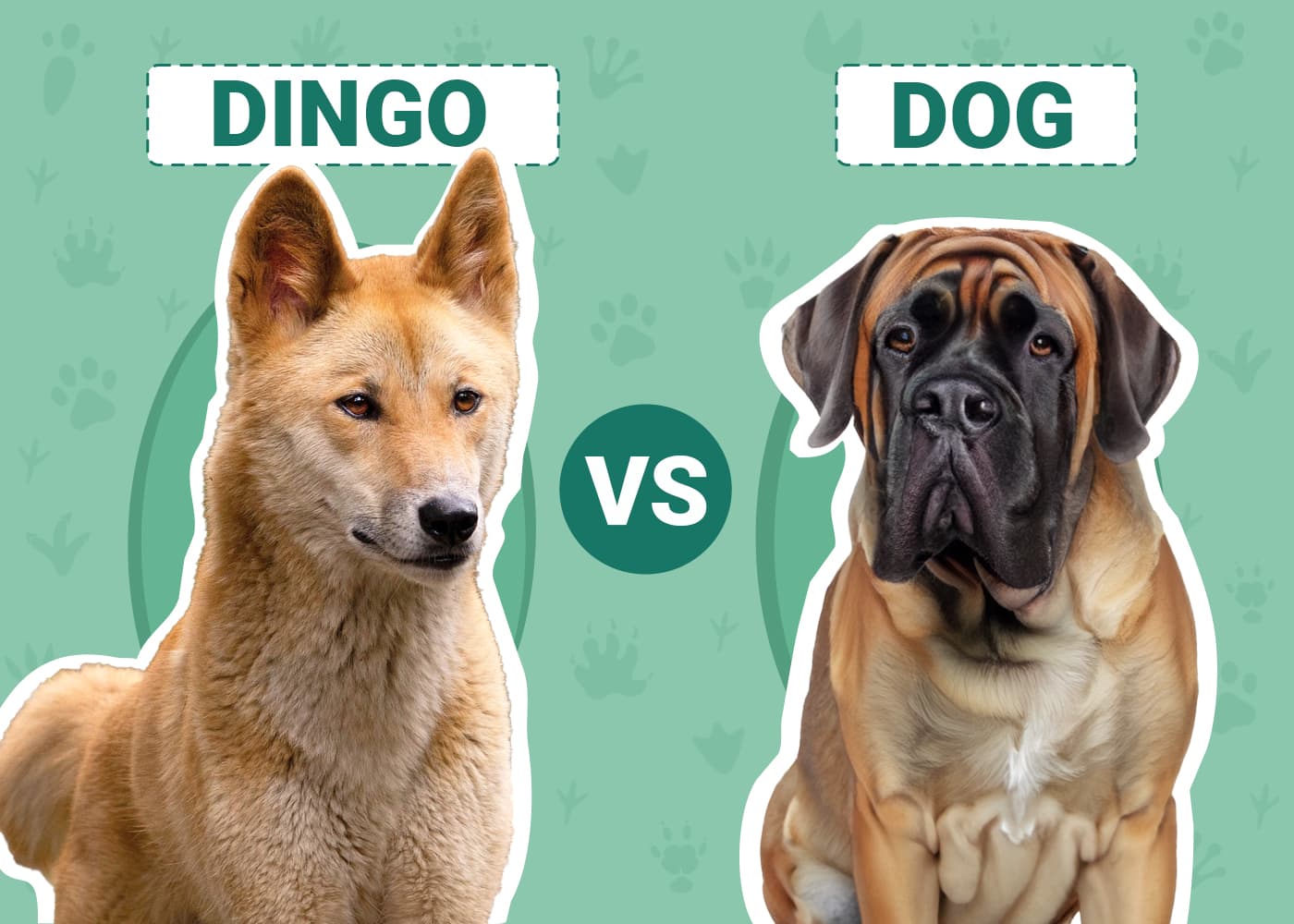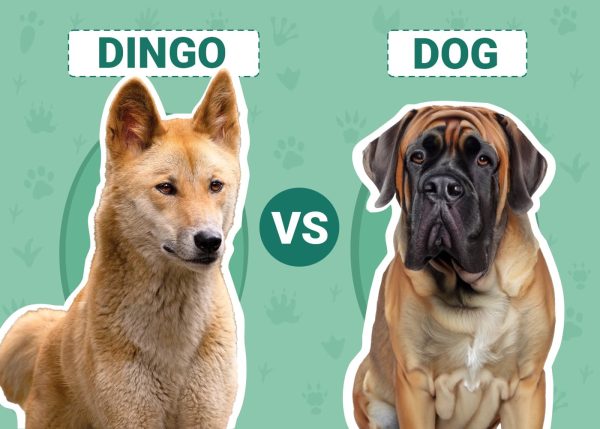Click to Skip Ahead
Dingoes and domestic dogs belong to the canine genus, and they are not dissimilar creatures. However, their differences predate written history. Wild dingoes have roamed the Australian continent for the last 4,000 years, while archaeological evidence suggests the domestic dog has been mankind’s best friend for 30,000 years.
Not surprisingly, dingoes and dogs can also breed with each other. With the arrival of the domestic dog in Australia in 1788, crossbreeding has occurred, leading to hybrid dingoes and a decrease in the population of purebred dingoes. Hybrid dingoes look like purebred dingoes, so the only way to tell them apart is through DNA testing.
Outside of Australia, dingoes can be found in southeast Asia, but no wild dingoes are found in the United States. We selected America’s most popular domestic dog, the Labrador Retriever, to match up against the dingo and see how the two compare. Are wild dogs all that different from domestic dogs? Let’s find out.
Visual Differences
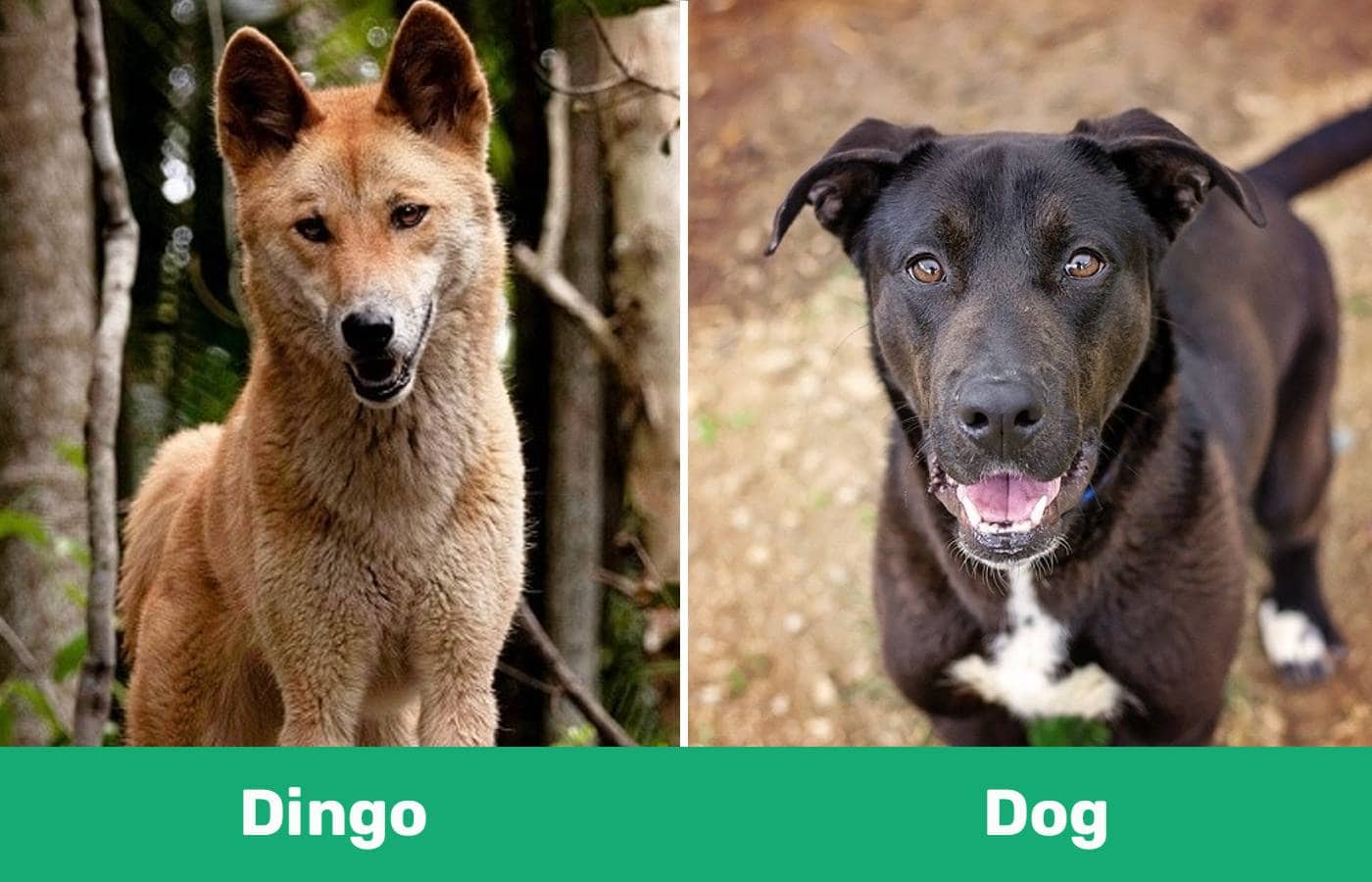
At a Glance
- Average height (adult): 19 – 24 inches
- Average weight (adult): 22 – 35 pounds
- Lifespan: 10 year in wild, longer in captivity
- Exercise: Moderate; in captivity, 1–2 hours per day
- Grooming needs: Minimal
- Family-friendly: No
- Other pet-friendly: No
- Trainability: Difficult
- Average height (adult):5–24.5 inches
- Average weight (adult): 55 – 80 pounds
- Lifespan: 10 – 12 years
- Exercise: 2+ hours a day
- Grooming needs: Minimal
- Family-friendly: Yes
- Other pet-friendly: Yes
- Trainability: Easy

Dingo Overview
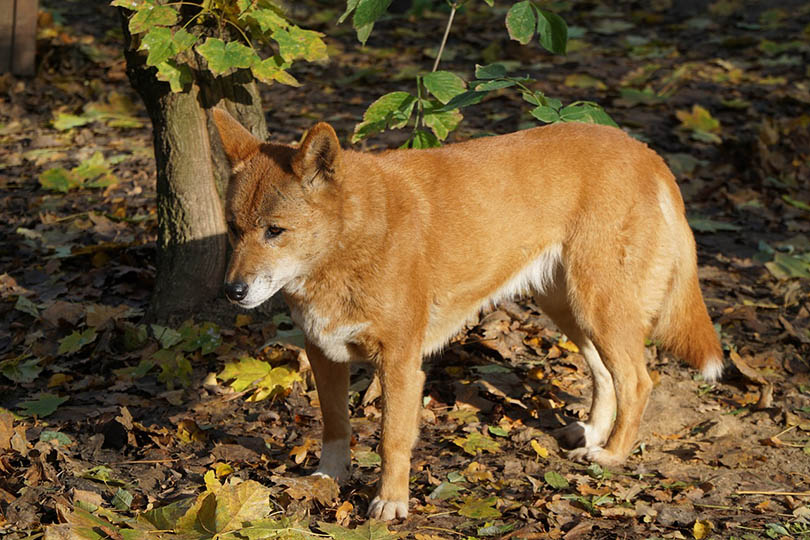
The dingo looks like a dog, and therefore, many people believe that they’re harmless. But they are still a wild animal and can be dangerous to humans. Like any other wild animal, dingoes should be left alone if they’re spotted in their natural habitat. While unprovoked attacks are rare, this risk increases if the dingo feels threatened or scared.
Dingoes mainly have ginger-colored short coats, although their coats can be different colors depending on the dingo’s habitat. Desert dingoes have golden coats, and forest-dwelling dingoes are dark brown to black. Their eyes are yellow, amber, or orange. White feet and tail tips are present in purebred dingoes. Their size makes them Australia’s largest mammal carnivore. While their heads appear to be similar to domestic dogs, their muzzles and teeth are longer. A fun fact is that dingoes, unlike most other breeds, don’t have dewclaws.
Dingoes hunt their food, eating any prey animal that they can find. They protect their territories and run in packs. While they bark on occasion, they mainly howl. At night, they howl to alert pack members to their location and keep away intruders.
Keeping dingoes as pets can only be done legally without a permit in New South Wales and Western Australia. Organizations dedicated to the breeding of captive dingoes exist in the areas where one can legally acquire a dingo. Usually, they are available between the ages of 5–16 weeks. Age is important because the dingo should immediately begin training and socialization to be a successful pet.
It is illegal everywhere to capture a wild dingo and try to keep them as a pet. The wild nature of these animals is still present. Rescue organizations have dingoes and dingo hybrids for adoption. While these animals are older, they’ve been socialized and their temperaments are established.

Personality
Dingoes in captivity can be gentle and friendly but they tend to be aloof at times, especially with strangers. In a family, they can form a strong bond with one person while ignoring everyone else. Their friendliness and willingness to be a pet depend heavily on how they were socialized. Even then, it’s difficult to subdue the wildness with which the dingo was born.
If dingoes are left alone for long periods, they could get bored and become destructive. They also like to try and escape situations that don’t make them comfortable, putting them at risk once they are on the loose. Dingoes have rotational wrists that resemble those of humans. These wrists, along with a flexible neck, enable them to climb, jump, and dig their way to freedom. They are energetic and require exercise every day. Keeping a dingo means having to put in the effort to meet their needs because they’re not a typical dog.
Training
Respecting the dingo’s heritage is an important part of training one of these animals. This isn’t a domesticated breed. They are a dog with wild roots and instincts. Dingoes are smart but stubborn. They will do what you request of them only if they feel like it. At times, they will refuse to listen. With time and patience, they can become well-trained, but it’s going to take work. Forming a bond with the dingo is the key to being able to train them. Using positive reinforcement is the only way to get them to learn anything. Keeping their interest with treats, praise, and affection will make them behave in the desired manner.
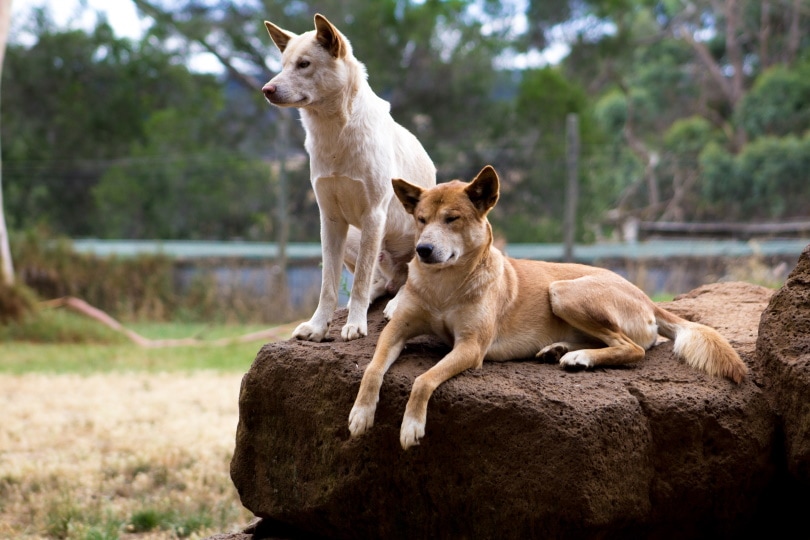
Health & Care
Dingoes can be harder to care for than a domestic dog. Dingoes also can’t live with other pets. Their hard-wired prey drive makes them dangerous to rabbits, cats, livestock, etc. Dingoes will also need to be vaccinated regularly for rabies and distemper and microchipped in case they ever escape. Yearly vet visits, heartworm, flea and tick prevention, and regular nail trimmings are required for this animal. Brushing their coats every few days will help keep their shedding down. While their wild diet is wild-caught prey, in captivity, they can be fed a well-balanced commercial dog food that is high in protein. They appear to be healthy with no known health issues, but this is largely because they aren’t kept as pets often enough for such issues to be noticed.
Suitable for
The dingo is a suitable pet for someone who lives in the areas where it’s legal to own one. This person should have no other pets and a strong desire to positively bond with a high-spirited, strong-willed dog with a wild ancestry. Dingoes are more difficult to care for than an average domestic dog and require plenty of patience.
Dog (Labrador Retriever) Overview
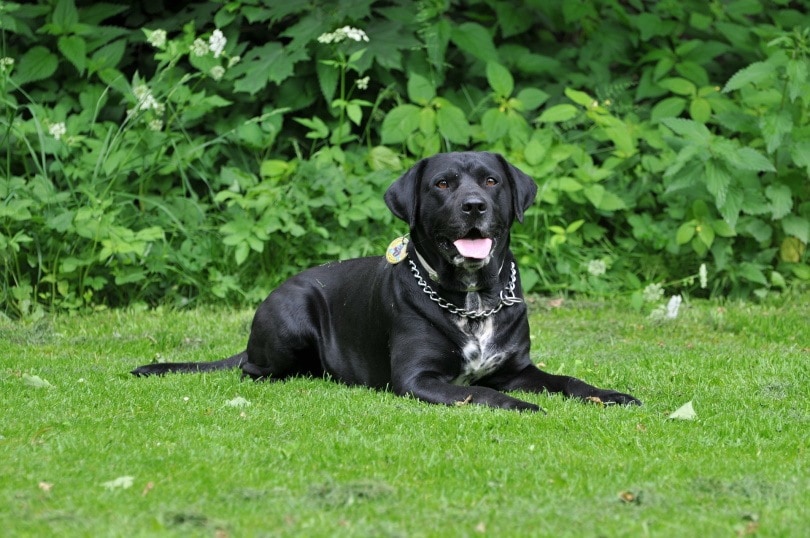
The Labrador Retriever, known affectionately as the Lab, was bred to be a working dog. They were originally workers on fishing boats, pulling nets and hauling fish. Their intelligence, work ethic, and loving nature make them widely used today as service and therapy dogs.
Today, these dogs are bred to be working dogs and family companions. The lovable and smart Lab is America’s number-one breed registered with the AKC. This sturdy dog comes in three colors: chocolate, yellow, and black. Their short coats are made of a top and undercoat, which heavily shed.
This breed is well-loved due to their appearance, intelligence, and temperament. They make wonderful family dogs and are known to get along well with children and other animals. Labs love water and swimming. They are high-energy dogs with a need for exercise every day. A fenced-in yard or dog park is ideal for them to run and chase a ball. The Retriever in them makes them love to play fetch. Long, brisk walks are ideal if a fenced-in area is not possible.
If a Lab is bored, you’ll know it. They will find ways to occupy their time in the house, and this can mean they seek out trouble. Getting into the trash or chewing up shoes are things that Labs have been known to do when left to their own devices. This is a social dog who doesn’t want to be left alone for long. A Lab is happiest when they are around their people and being involved in activities.
Personality
Labs are loyal, loving, funny dogs who always appear happy. Their sweet nature makes them ideal for families with children. They’re smart and can learn new things quickly with the right training methods. Labs are eager to please and want to perform their tasks correctly.
Labs are affectionate and always want to interact with their people for petting and playing. They will bark to alert you to anything new happening or if a stranger approaches, but they’re not aggressive. They’re adaptable, easy-going, and gentle, making them an ideal dog for just about anyone to own.
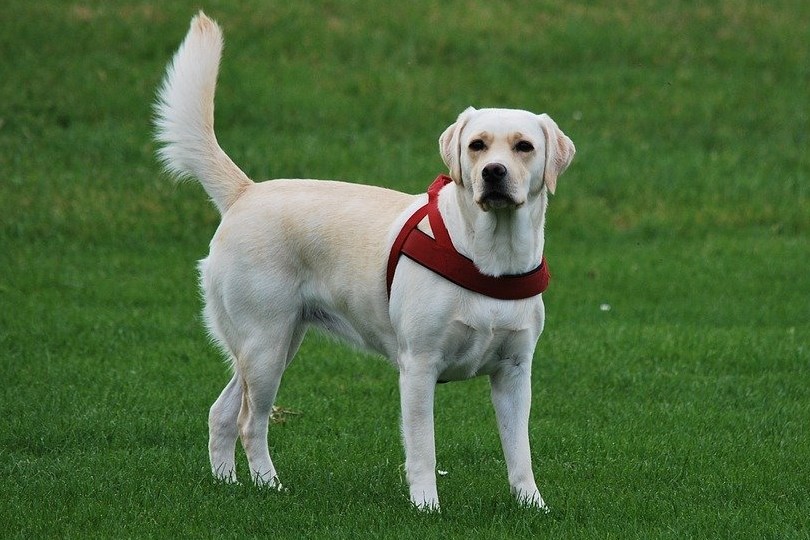
Training
Labs are highly trainable. They have a strong ability to learn new things quickly. Combined with a strong desire to do a job, the Lab will learn just about anything that you want to teach them. Positive training methods are best to keep the dog engaged and focused.
While Labs are naturally loving and docile, things can go wrong if a Lab puppy is not properly socialized or trained. Dogs that are not socialized correctly will be fearful, unruly, and timid. The Lab may show up with the right foundation to be a wonderful dog, but their ultimate personality depends on how they’re raised.
Health & Care
Labs require baths when they’re dirty. Aside from that, you can bathe them every few months or whenever they start to have an odor about them. Since Labs have floppy ears, regular ear cleaning is important to ward off ear infections. Whenever your Lab has been in the water, the insides of their ears should be thoroughly dried.
The high-shedding coat of the Lab should be brushed regularly to minimize shedding and help their coat stay shiny and clean. Keeping their nails trimmed is also important for paw health.
A high-protein kibble that’s balanced with vitamins and minerals is enough to keep your dog healthy. Treats are always encouraged, especially during training sessions, but should be kept to a minimum (for example, one treat broken into tiny pieces) to avoid weight gain. Labs are notorious for eating more than they should be allowed and gaining weight. Obese Labs can have health issues down the road.
Labs are prone to hip dysplasia, a condition where the hip joint becomes dislocated and causes extreme pain. The ball and socket of the hip joint rub together instead of gliding, leading to the deterioration of the joint. This makes walking difficult. Labs can go lame as a result, and since they are large dogs, it can be hard to care for them once they can no longer move. Regular vet visits and X-rays will determine if your dog is at risk for this disease. Hip replacement surgery is a treatment for this disease. Another treatment option is physical therapy.
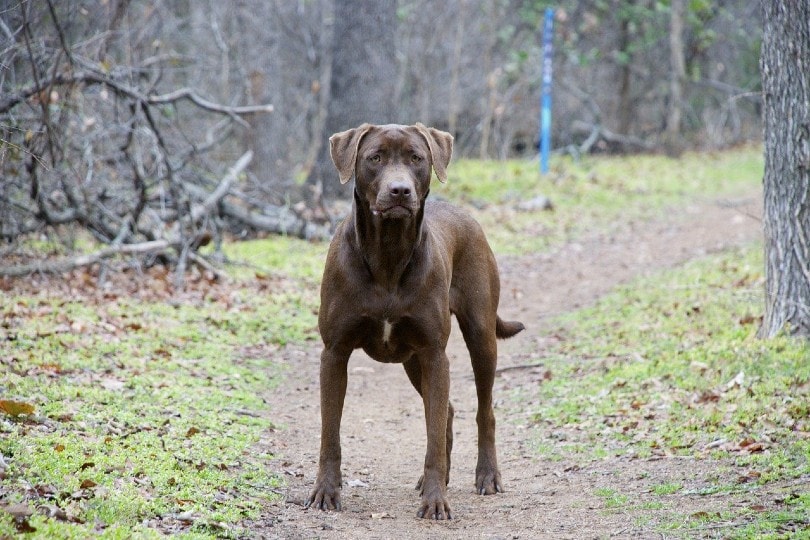
Suitable for
Labs are suitable companions for active families or adult owners who want an active and playful dog. They will become a part of the family and bond to their people, wanting to be around them at all times. Labs are ideal for people with time to dedicate to their dog and who want a loving, affectionate addition to their homes.

Which Breed Is Right for You?
Unless you’re in certain areas of Australia, having a pet Dingo is illegal. For residents of America, the Labrador Retriever is the best option. Those who can own a Dingo should be aware of the challenges that come along with having one. They can be stubborn, independent, and destructive. Their wild ancestry and high prey drives make living with other animals impossible. Most will take time to train, and socializing them early is a key to success.
Labs are affectionate and playful dogs that love people and want to be a part of the family. They’re social and happy, needing moderate levels of exercise and playtime to stay that way. Labs are smart, entertaining, and low-maintenance.
Whichever dog you choose to welcome to your family, make sure you are aware of their needs and are willing to put the effort in to keep them happy and healthy. You will have a rewarding companion for years to come.
Featured Image Credit: Storme22k (L), pixel2013(R), Pixabay

